Table of contents
Coconut milk is made from the flesh of the coconut ( Cocos nucifera ). Coconut milk is not the coconut water in the coconut. It is not normally purchased raw, but preserved by UHT or pasteurization.
Use in the kitchen
Coconut milk is made by pureeing coconut flesh with water and then squeezing it out. This creates a tasty, milky liquid. Coconut milk enriches both sweet and savory dishes with its exotic, sweet, nutty flavor. In Asian countries, the Caribbean and tropical regions, coconut milk has been popular in numerous dishes for centuries. It is used in soups, sauces, curries and vegetable dishes. Coconut milk should not be cooked for too long or it will curdle. It can be simmered carefully on a low heat or added at the end of the dish. Coconut milk can also be used for desserts such as vanilla coconut cream, chocolate mousse, ice cream (glace) or for baking. Particularly fatty, thick coconut milk is sold as coconut cream .
Coconut milk is found as an industrially produced product in stores, often packaged in cans or tetra packs and preserved by UHT or pasteurization. Before using the coconut milk, the can or tetra pack should be shaken well to redistribute the fat floating on top. Coconut milk cannot be permanently homogenized due to its high fat content. This leads to the fat and water content separating in the packaging. To counteract this separation, emulsifiers, stabilizers and/or thickeners are sometimes added to the coconut milk. If the coconut milk (the coconut fat) settles on the edge of the can, this is a sign that no stabilizers or thickeners are included.
Can you drink coconut milk from a can? Coconut milk from a can, like that from a Tetra Pak, is suitable for immediate consumption. You can drink the coconut milk "raw", ie consume it without first heating it. However, canned coconut milk is not raw food quality.
Coconut milk can be diluted with water if you use it for (milk) shakes, fruit and vegetable smoothies or muesli. Alternatively, more and more shops are selling so-called "coconut drinks", a diluted version of coconut milk that contains less fat and is similar to the consistency of cow's milk. Coconut milk is a popular cream and milk substitute for many vegans or lactose-intolerant people. However, due to the high fat content of coconut milk, it is better to use oat milk , soy milk , rice milk , hazelnut milk or almond milk . Coconut cream is often used for cocktails such as Piña Colada or Batida de Côco. This consists of coconut fat and sweetened coconut milk.
Making your own coconut milk
If you want to make coconut milk from coconut chips or coconut flakes , you should make sure that it is raw. You will need a good blender, coconut chips or coconut flakes and water. For one cup of coconut flakes/coconut chips, you need two to three cups of water. Put the coconut flakes/coconut chips in a blender and pour hot water over them. After stirring carefully, let the mixture stand and swell for at least 10 minutes. Then mix until you have a homogeneous, smooth mass. Pour this mass in portions into a fine sieve (or a strainer cloth or cotton kitchen towel) and squeeze as much liquid out of the coconut pulp as possible. You can enjoy the fresh coconut milk straight away. The pressed coconut flakes are also great for use in muesli, cakes, coconut cookies, coconut balls or even in a fruit salad. Alternatively, you can first make a coconut puree from the coconut flakes, which you then dilute with water to make coconut milk. To make the puree, mix a large amount of coconut flakes/coconut chips in a blender until you have a creamy mass. The coconut puree can be stored in a sealed glass container in the fridge for 2-4 weeks.
Alternatively, you can also make coconut milk from fresh coconut meat . You can find the recipe under the ingredient coconut milk, raw .
Vegan recipe for coconut ice cream with passion fruit
Ingredients (for 4 people): 5 tbsp coconut flakes , 500 ml coconut milk, 4 passion fruits .
Preparation: Mix the coconut flakes with the coconut milk well. Halve the passion fruit, remove the flesh with a spoon and mix 3⁄4 into the coconut mixture. Pour the mixture into a cake tin lined with cling film and freeze for at least 2 hours. Take the ice cream out of the freezer, let it thaw briefly and shape it into balls with an ice cream spoon. Alternatively, you can take the ice cream cake out of the cake tin and cut it into slices with a knife. Garnish with the remaining passion fruit and serve immediately.
Vegan recipes with coconut milk can be found under the note: " Recipes that have the most of this ingredient ".
| Not only vegans or vegetarians should read this: Vegans often eat unhealthily. Avoidable nutritional mistakes . |
Purchasing - Storage
Canned coconut milk can be found in the range of major retailers such as Coop , Migros , Denner , Volg , Spar , Aldi , Lidl , Rewe , Edeka , Hofer and Billa , sometimes also in organic quality. Organic supermarkets such as Denn's Biomarkt and Alnatura also stock coconut milk. Industrially produced coconut milk must contain at least 10% fat. Coconut drink, often in 1 liter tetra packs or bottles, is more liquid than coconut milk and contains less fat. Also available is coconut (milk) powder, which you mix with water to make coconut milk. This is ideal if you only need small amounts. You should make sure that no rice starch, sugar or flavorings have been added to the coconut milk powder. Coconut milk should not be confused with coconut cream , which must contain at least 20% fat and is much thicker.
There are big differences in the quality of coconut milk. Coconut milk often contains guar gum or other thickeners, as well as stabilizers. In any case, make sure it is organic quality, as these coconuts grow without pesticides and in organic mixed cultures.
The availability of coconut milk varies depending on the size of the store, catchment area, etc. If you are interested, click on our recorded food prices for the DA-CH countries (above under the ingredient image). There you will find current prices from various supermarkets and their price development.
Storage tips
Once opened, it is best to put coconut milk in a resealable container. This way, it can be stored in the fridge for up to 4 days. Opened cans should not be stored in the fridge. Homemade coconut milk from fresh coconuts will last in the fridge for about 2 to 3 days.
Another storage option is freezing. To do this, pour opened or fresh coconut milk into ice cube trays and place them in the freezer. This way, you always have small portions that thaw quickly.
Ingredients - Nutritional values - Calories
Coconut milk (organic) contains 197 kcal per 100 g. It consists largely of water and fat. The fat content of 21 g/100g corresponds to 30.5% of the daily requirement. This consists of a very high proportion of saturated (medium-chain and long-chain) fatty acids. Therefore, coconut milk contains practically no unsaturated fatty acids (omega-3 and omega-6 fatty acids). Coconut milk contains few carbohydrates (2.8 g/100g) and little protein (2.0 g/100g). 1
100 g of preserved coconut milk contains 0.77 mg of manganese . This corresponds to 38% of the daily requirement. Raw coconut milk contains 0.92 mg/100g. Coconut cream contains significantly more manganese (1.3 mg), coconut meat (1.5 mg) and coconut flakes (2.7 mg) - but also more fat. 1
It also contains small amounts of phosphorus , magnesium and potassium . Coconut milk contains a relatively high amount of iron (3.3 mg/100g) compared to other coconut products. Raw coconut milk contains only 1.6 mg and coconut meat only 2.4 mg per 100g. 1 However, this is not much compared to iron-rich foods such as chia seeds (7.7 mg), amaranth and teff (7.6 mg), which can be consumed in larger quantities. It is therefore wrong to promote coconut milk as a good "source of iron". Since coconut milk should only be consumed in small amounts due to its high fat content, the actual nutrient content is put into perspective.
Does coconut milk contain selenium? Canned coconut milk does not contain selenium . Raw coconut milk , which you make yourself from coconut meat, may contain small amounts of selenium (6.2 µg/100g). 1
The complete ingredients of coconut milk, the coverage of the daily requirement and comparison values with other ingredients can be found in our nutrient tables. In the article Nutrients explained you will get a detailed insight into the topic.
Effects on health
It has been observed that arteriosclerosis, heart attacks and strokes are particularly rare in areas where a lot of coconut milk and coconut products are consumed. The Kitava Study by Steffan Lindeberg with Pacific island peoples whose traditional diet consists of a very high proportion of coconuts shows that these diseases do not occur there. 10 However, those islanders who emigrated to New Zealand and gave up the Kitava diet soon suffered from the diseases mentioned above. However, these studies raise the question of whether the subsequent consumption of much more refined products such as flour, rice and sugar was the main reason for their poor health. Other factors contribute to the health of the islanders. For example, the high consumption of raw plants and the low consumption of proteins. See the book review of the China Study .
The praise of the high proportion of medium-chain fatty acids (MCT) should also be treated with caution. It is true that our body can absorb them more easily from the gastrointestinal tract into the bloodstream, which is why they are mainly used in patients with digestive and absorption disorders who suffer from energy deficiency and impaired fat absorption. But apart from that, the disadvantages clearly outweigh the advantages, especially when you consider that extra-enriched MCTs are often used for the aforementioned medical conditions and not pure coconut oil. Experts also recommend the use of MCTs only for strictly specified medical indications. 9
For more information on health aspects, see the link to coconut oil (coconut oil, coconut fat) .
Dangers - Intolerances - Side effects
A coconut allergy is rare. However, as consumption becomes more widespread, more and more cases of allergic reactions are occurring. This particularly affects children who are given coconut milk as a cow's milk substitute or who use coconut oil as a body lotion. It has been found that a cross allergy with walnuts , sesame , macadamia nuts , almonds and cashews can occur. 11,12
How (un)healthy is canned coconut milk (tetra pack)? The health value of coconut milk is controversial, as is the case with other coconut products. The content of saturated fatty acids in coconut flesh is very high at around 82%. The total fat content in coconut milk can vary depending on the raw material used when making it yourself. 100 g of canned/tetra pack coconut milk contains around 21 g of fat. 1 Saturated fats promote an increase in cholesterol levels, which promotes heart disease and strokes. It is not just animal fats that contain a lot of saturated fatty acids. In addition to coconut fat (coconut oil) with 82% , palm oil (palm fat) with around 49% and cocoa butter (around 60%) are also rich in saturated fatty acids.
In general, saturated fatty acids have a negative effect on blood values and cholesterol levels. When coconut fat or coconut oil is consumed, the undesirable LDL cholesterol in the blood increases, which promotes cardiovascular diseases, including heart attacks. However, the healthy HDL increases a little more, which then improves the total/HDL serum cholesterol ratio. Only measured against this ratio and when ignored, coconut fat appears to be healthier, which is a fallacy. A 2016 study analyzed 21 research papers, including 8 clinical studies and 13 observational studies, and concluded that replacing coconut oil with a healthier oil reduces the risk of cardiovascular diseases. 8
Ecological footprint - animal welfare
The ecological CO 2 footprint of preserved coconut milk depends on various factors, including the way the coconuts are grown, processing, transport and packaging. According to the Big Climate Database, this is 3.5 kg CO 2 eq/kg 14 for coconut milk, although it is unclear whether this is the fresh or preserved form. It can be assumed that the ecological footprint of preserved coconut milk is higher than that of fresh milk due to additional packaging.
Due to their numerous useful properties and clever marketing, coconuts are in demand almost worldwide - as food, but also for generating energy or for making decorations, furniture or medicine. In the tropical growing countries, this creates important jobs; in the Philippines, for example, up to 3.5 million people are directly or indirectly dependent on the coconut industry. 15 However, the coconut industry should be viewed with extreme skepticism, because small farmers often manage the coconut plantations for the western market, but the price is dictated by large trading companies. The farmers can barely live on this wage. When day laborers manage company-owned plantations, the conditions there are usually inhumane. 4,5 Certified goods have been available for years, but have rarely been in demand. 6 It should also be remembered that coconuts have had to travel long distances for our consumption and are therefore associated with high emissions.
The area required to grow coconut palms is often associated with land theft, deforestation and the destruction of local biodiversity. In order to meet the high demand, mixed crops are rarely planted, but monocultures are preferred. Coconut oil is also increasingly replacing the controversial palm oil . However, the yield of oil palms, with an average of around 3.8 tons of oil per hectare, is far higher than that of coconut oil, with 0.7 tons of oil per hectare. 4 If you look at the number of endangered species per million tons of oil produced, coconut oil performs even worse than palm oil. 16
A study by the University of Exeter shows that an average of 60 species on the IUCN Red List are threatened as a result. 6 Since trained monkeys are sometimes used to harvest coconuts, consumption also leads to a lot of animal suffering. The monkeys are trained violently for several years until they are able to pick the coconuts from the tall palm trees, which they have to do while tied up until they die. 7
Worldwide occurrence - cultivation
Coconut milk is made from the flesh of ripe coconuts. Coconut palms grow mainly in the equatorial zone, i.e. in tropical areas. People have been using the coconut palm for at least 3000 years. It probably originated in Polynesia (Pacific island region). From the 19th century onwards, coconuts gained economic importance when they were cultivated on plantations by the Dutch in Ceylon. 3
According to FAOSTAT , around 63.6 million tons of coconuts were produced worldwide in 2021. The main growing areas are Indonesia (17.1 million tons), the Philippines (14.7 million tons), India (14.3 million tons), and Sri Lanka (2.4 million tons). 2 In 2018, around 343,178 million tons of coconut milk were sold worldwide. The global coconut milk market is expected to grow from $873.8 million in 2019 to $1,673.2 million in 2025. 13
For information on growing and harvesting coconuts, see Coconut meat, raw (Coconut meat, organic?)
Industrial production
Coconut milk is made from coconut flesh. To do this, the coconuts are opened and the coconut flesh is removed. After cleaning, it is ground and pressed with the addition of warm water (30-80 °C). A mechanical screw press or hydraulic press is often used for this. After the coconut flesh-water mixture has been well mixed, it is filtered so that the solid components remain. After filtering, it is usually pasteurized to make the coconut milk last longer. 13 Since coconut milk is an emulsion of water and coconut oil, the two components separate after a few hours. The coconut oil settles together with the protein components. 13 Therefore, coconut milk must be shaken well before use.
Further information
The coconut palm ( Cocos nucifera ) is the only species of this genus, but there are many different varieties. The coconut is not a nut, but a single-seeded drupe. It consists of three carpels that grow together, which is why it is often slightly triangular in shape. The three eyes that you see on one side are the three germ holes, whereby only one germ begins to grow at a time.
Alternative names
Coconut milk, also called coconut milk, is sometimes also called coconut drink. The latter is often used for a "diluted version". Coconut cream , on the other hand, is a "concentrated coconut milk" with a high fat content. Coconut drink is sometimes also used to describe coconut water .
The English term for coconut milk is coconut milk. In English, the fruit, the tree or the seed are called coconut or cocoanut. When referring to the palm tree, we speak of the coconut tree.

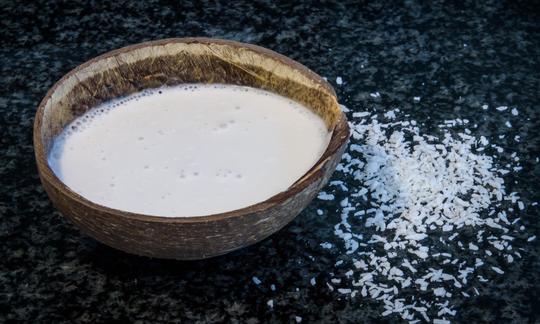

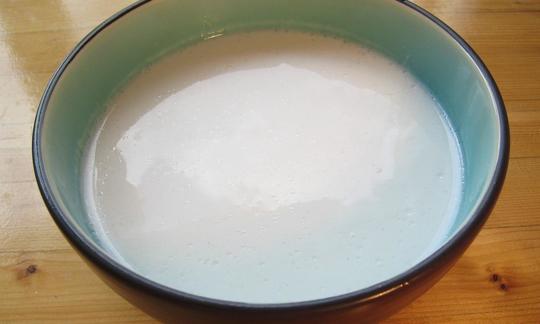

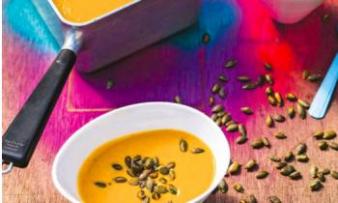
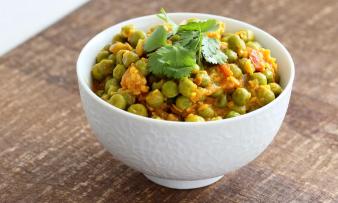
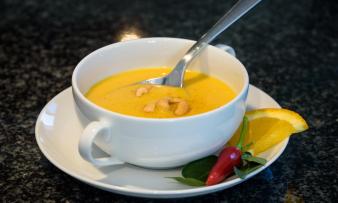





Comments